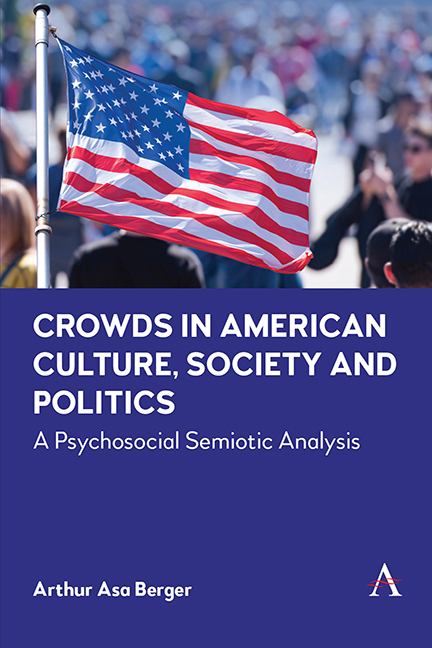5 - The Semiotics of Crowds
Published online by Cambridge University Press: 28 February 2024
Summary
People in crowds often dress in a manner to suggest their allegiance to whatever it is that draws them together. For example, if you go to a college football game, you will often find students from the college and fans of the team are wearing the team colors and sometimes tee shirts and sweatshirts with the team colors and the name of the college or the team (Figure 5.1).
Many people are unfamiliar with semiotics so, since this chapter deals with the semiotics of crowds, let me say a few words about the science of semiotics. There are two founding fathers of semiotics, a Swiss linguist Ferdinand de Saussure (Figure 5.2), who wrote a seminal book, Course in General Linguistics that was published in 1915, and the American philosopher Charles Sanders Peirce (Figure 5.3), who wrote many books on the subject and who gave the science its name.
The term “semiotics” is based on the Greek word for sign, sēmeîon, and semiotics is the science of signs—a sign being anything that can stand for something else, anything that conveys meaning. For example, our facial expressions are signs, our hairstyles are signs, our clothes are signs, and, according to Pierce, everything is a sign.
Peirce said (cited in Sebeok, 1977, page 6), “this universe is perfused with signs, if it is not composed exclusively of signs.”
If Peirce is correct and everything is a sign, semiotics becomes the master science since it enables us to interpret signs, so when you learned what words mean, as a little child and when you learned to read, you began your career as a semiotician. Actually, when you were just a few months old, and your parents smiled at you, and you responded to their smiles, you started your career as a semiotician.
Maya Pines describes this process as follows (“How They Know What You Really Mean”), San Francisco Chronicle, October 13, 1982):
Everything we do sends messages about us in a variety of codes, semiologists contend. We are also on the receiving end of innumerable messages encoded in music, gestures, foods, rituals, books, movies, or advertisements. Yet we seldom realize that we have received such messages, and would have trouble explaining the rules under which they operate.
- Type
- Chapter
- Information
- Crowds in American Culture, Society and PoliticsA Psychosocial Semiotic Analysis, pp. 51 - 60Publisher: Anthem PressPrint publication year: 2023



